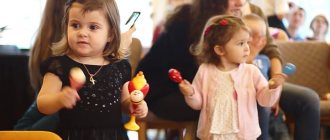Forms and methods of work on environmental education in preschool educational institutions
Kuzenkova
Forms and methods of work on environmental education in preschool educational institutions
Consultation for the pedagogical council on the topic: “ Forms and methods of work on environmental education in preschool educational institutions ”
Environmental education of preschool children has important social significance for the whole society. At this time, the foundations of ecological culture are laid in the human personality, and at the same time, a significant part of the country’s adult population— workers in the field of preschool education and parents of children— .
Methods of working with children on environmental education.
methods are ways of joint activities between educators and children , during which the formation of knowledge , skills and abilities is carried out, as well as the development of attitudes towards the world around us.
teaching methods are widely used in environmental education : visual, practical, verbal.
Visual methods include observation, looking at paintings, demonstrating models, films, videos, and presentations. Visual methods most fully correspond to the possibilities of cognitive activity of preschool children and allow them to form vivid , concrete ideas about nature.
Practical methods are games , elementary experiments and modeling. The use of these methods allows the teacher to clarify children's ideas, deepen them by establishing connections and relationships between individual objects and natural phenomena, systematize the acquired knowledge, and train preschoolers in applying knowledge.
Verbal methods are stories from the teacher and children , reading works of art about nature, conversations. Verbal methods are used to expand children's knowledge about nature, systematize and generalize it. Verbal methods help to form in children an emotionally positive attitude towards nature. When working on environmental education of children, it is necessary to use different methods in a complex and correctly combine them with each other. The choice of methods and the need for their integrated use are determined by the age capabilities of the children, the nature of the educational tasks that the teacher . For example, the formation of knowledge about the way of life of a rabbit is impossible without observations; children learn about ways to care for indoor plants in the process of work; about the properties of snow and ice - during experiments or games. Knowledge about wild animals is formed while reading or telling a story to the teacher .
Forms of organizing work with children on environmental education
Organized educational activities (classes)
Classes are the leading form of organizing work to familiarize children with nature. They allow the teacher to form knowledge about nature in a system and sequence, taking into account the age characteristics of children and the natural environment.
Under the guidance of the teacher, develop in the classroom and develop basic cognitive processes and abilities. Classes provide an opportunity to clarify and systematize children’s personal experience, which they accumulate during observations, games and work in everyday life.
Excursions. Excursions are one of the main types of classes and a special form of organizing work on environmental education . Excursions are conducted outside the preschool. This is a kind of outdoor activity.
The advantage of excursions is that they allow children to become acquainted with objects and natural phenomena in a natural setting.
On excursions, children get acquainted with plants, animals and at the same time their living conditions, and this contributes to the formation of primary ideas about the relationships in nature, as well as the development
Ecological holidays and leisure activities . The pedagogical meaning of holidays and leisure is to evoke in children a positive emotional response to their “natural”
content.
The scripts for these events use material that children are familiar with. More often than holidays, leisure activities are held on a variety of topics - they are organized by the teacher .
Environmental actions . An effective means of solving the problems of environmental education of preschool children are environmental actions . Environmental actions are event-significant events aimed at preserving the environment. During their implementation, preschoolers receive natural history knowledge, they develop environmental culture skills and an active life position. The promotions also serve as environmental propaganda among parents, who become active helpers.
Introducing children to nature in everyday life. Observations during classes and excursions are carried out in close connection with work in everyday life. Teachers widely use walks for environmental education of children . They provide an opportunity for children to accumulate ideas about natural phenomena that occur over a long period of time. Teachers introduce pupils to the daily changes of nature according to the seasons in the kindergarten area, organize a variety of games with natural materials - sand, clay, water, ice, etc. Children accumulate sensory experience, cultivate curiosity and observation.
And also in kindergarten groups it is necessary to create an appropriate subject-development environment, which provides for the construction of a variable developmental space, focused on the possibility of children freely choosing materials and participants in joint activities. It should be accessible, that is, provide students with free access to materials , manuals, and natural objects. Safe, i.e. all its elements must meet the requirements for ensuring reliability and safety of their use. And include not only a natural corner, but also a center of cognitive activity for experimenting with various materials, observing natural phenomena and inanimate objects.
Children's work in nature. Varied work in nature brings children a lot of joy and contributes to their all-round development. In the process of work, a love for nature , a careful and caring attitude towards it is cultivated. Children develop an interest in work activity and a conscious, responsible attitude towards it. Working in nature, children become familiar with the properties and qualities, states of natural objects, and learn ways to establish these properties. In the process of working in nature, children develop knowledge about plants and animals. Children observe plants, practice labor skills (watering plants, loosening, collecting seeds and harvests, etc.)
.
This work has a great influence on the development of hard work , independence and mutual assistance.
Working with parents is one of the most important forms of environmental education . A full educational effect is achieved when the kindergarten and the family act in the same direction. Therefore, working with parents is one of the most important forms of environmental education . When working with parents on environmental education of children, various forms :
• Questionnaires, conducting surveys
• Parent meetings, master classes, consultations;
• Joint leisure activities, holidays, KVNs, quizzes, etc.
• Participation in thematic exhibitions, competitions.
• Involving parents in joint work with their children on the kindergarten site, landscaping the kindergarten territory;
• Release of newspapers, photo newspapers, environmental albums , posters,
Such work with families helps to improve the pedagogical culture of parents, develop the correct forms of interaction between kindergarten and family, and helps create a more favorable environment in the family.
Conclusion. Thus, the formation of environmental consciousness , ecological culture is a long process, the beginning of this path is preschool childhood. The formation of the principles of ecological culture is the formation of a consciously correct attitude directly towards nature itself in all its diversity, towards the people who surround and create it. And in conclusion, I would like to say that the most important thing in environmental education is the personal conviction of the teacher, the ability to interest and awaken in children and their parents the desire to love, cherish and protect nature.
Ecology and education are the essence of concepts
It is often the most obvious that seems most incomprehensible. The concept of “ecology” has long become common, familiar, and most importantly, universal. The problem is that ecology is a very complex science, formed at the intersection of biology, geography, chemistry and, to some extent, physics. To be even more precise, ecology is a particular manifestation of general systems theory.
If we ask a person far from science what ecology is, we usually get the answer: “It’s something about cleanliness on the planet.” Somehow it happened that this concept was reduced from a complex systems science to actions to cleanse the territory of garbage.
Without going into the details of this transformation, we will give a purely scientific definition of ecology: it is the science of the patterns of functioning of ecological systems. It is logical to continue this definition with the concept of ecological systems. These are living systems, the functional units of which are organisms of different species in their interaction with each other and with components of inanimate nature. Thus, the object of the science of ecology is all living matter on the planet.
However, biology should not be confused with ecology. In biology, the object is the organism in all its manifestations except the psyche. In ecology, the object is the process of interactions of organisms with each other. Since these interactions are constant, they form an ecological system.
Thus, to simplify the definition, ecology is a system of knowledge about how organisms interact with each other to form an ecological system.
Before moving on to the problems of environmental education, it is necessary to touch upon one more concept - the ecological environment. Many people believe that ecology and environment are synonymous. However, it is not. The environment is not a completely correct concept. The environment is what is in the middle, what surrounds the object. Thus, we get a tautology.
It would be more correct to use the term ecological environment, which is interpreted as a specific environment created by the interaction of living objects. Since any organism can live only in such an environment, this definition can be interpreted somewhat differently. The ecological environment is those parameters of the external environment for a given organism that are formed by the activities of various organisms in their interaction with each other.
And the concept of “environment,” despite its incorrectness, has been included in textbooks and laws. For this reason, it is more of a legal term relating to the safety of human life than a scientific concept.
Education: variety of approaches to definition
The concept of “education” is equally multifaceted and contradictory. It may include the following definitions.
- a personality trait formed by his environment (educated and uneducated child);
- a set of technologies aimed at shaping the personality of a child, who must have certain qualities;
- a purposeful process of personality change in accordance with the requirements of society or another system (for example, the state);
- the formation of skills, values, socially significant habits, motivations, a system of self-restraints that are adequate to the state of society at this stage of its development.
A few words about the criteria for environmental education of older preschoolers
The criteria for environmental education include the following components:
- Value-motivational . Here we are talking about children understanding the full value of nature. An important motive for showing interest and gaining knowledge about environmental problems in the world.
- The cognitive component includes the presence of ideas and knowledge that are conscious and reliable on the problem under consideration.
- The emotional-sensory component reveals feelings of responsibility. Children want to take care of nature. It is also important to show positive emotions towards others.
- The practical activity component is characterized by the presence of practical skills in caring for nature.




